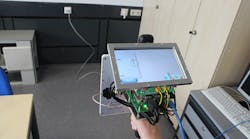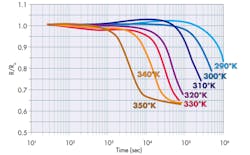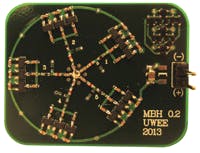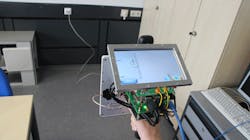RFID Makes Internet of Things Come to Life
RFID is shaping up to be an important building block for the Internet of Things (IoT). Those attending the recent IEEE RFID 2014 conference in Orlando got a chance to see where the technology is headed in areas ranging from antenna designs to reflective communication methods.
RFID at Disney and in the fridge
The killer application of RFID is still inventory management. David Worrall of Disney’s New Technology Group said, “RFID technologies have been instrumental in streamlining our costuming inventory processes and providing global operational efficiencies across our theme parks, resorts, and cruise ships.”
Another example came from industry researcher Ismail Uysal from the RFID Center at University of South Florida. Uysal worked on tracking temperature and spoilage in the cold-food supply chain. From his research he concluded, “Pallet level or even higher-resolution temperature monitoring can be more widely adopted if three important issues are addressed — cost, data speeds, and standardization.”
One presenter, Dr. Greg Kenning of Indiana University of Pennsylvania, addressed the food-temperature problem with a new material made up of alternating layers of cobalt and antimony. The resulting tag measures the dc resistance of this material, which happens to lower its electrical resistance the longer it stays in warm temperatures.
Consider, for example, a pallet of strawberries, marked with one of these sensor tags stored in a warehouse at room temperature for one day. The pallet tag would have a resistance reading much lower than would that on a pallet stored in a refrigerated storage room. The biggest upside to this technique is that it can be implemented in a passive sensor that uses energy-harvesting charge pumps rather than batteries.
Harvesting energy at any and all frequencies
Aaron Parks and Dr. Joshua Smith from the University of Washington expanded an idea used in simple conventional RFID tags that employ charge pumps designed only for the 915-MHz ISM band. The team put together a prototype with five charge pumps — one for each frequency band around 237, 400, 600, 900, and 1,350 MHz.
With the new charge pumps, the team is able to harvest enough energy from ambient sources to do useful work. For example, they can harvest about 60 uW from a nearby TV-broadcast antenna transmitting at 539 MHz. This happens while simultaneously harvesting about 50 uW from a standard RFID reader at 915 MHz.
More data, more possibilities
Communications between RFID tags and readers is notorious for being low-bandwidth. But researchers think it can improve. For instance, a team out of Duke University designed a system that can send live audio, images, and possibly video across a 5-Mbps link from tag to reader.
This may not sound like a lot, but it is a 10x improvement over the standard “gen 2” passive RFID tag that sends only about 0.5 Mbps to the reader. This boost in data rate could be used to transmit images and possibly video if enough energy could be harvested to power a camera.
Here’s how it works. The passive RFID tag conveys an unmodulated signal back toward the RFID reader via modulated reflections. The passive tag has to scavenge for energy, so it cannot transmit signals like normal. Instead, it reflects the signals already in the air. It’s much like a mirror reflecting the light from a flashlight in a dark room. The modulation scheme used in the Duke paper is Slow-Scan Television (SSTV), which conveys pixel luminance via amplitude modulation and color via frequency modulation.
Augmented reality using RFID
Andreas Parr and Robert Miesen from Friedrich-Alexander University near Nuremburg, Germany, showed off a handheld computer screen with a front-facing video camera attached to an RFID reader. The computer screen shows a live view from the video camera.
With a few clicks on the screen, Parr and Miesen’s augmented-reality application locks onto and tracks an RFID tag in the camera’s view. As you move the handheld assembly, the application smoothly tracks the RFID tag. This demonstration shows the next level of visual target tracking and augmented reality available by combining with RFID.
IEEE RFID conferences take place in early Spring each year alongside RFID Journal LIVE!, the largest RFID industry conference in the world.Next year’s RFID 2015 conference will take place in San Diego from April 15-17, 2015.




